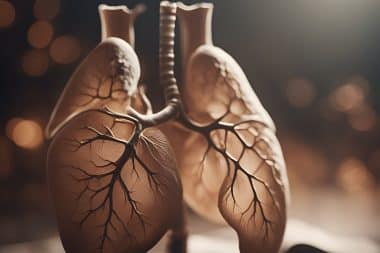A very rare chronic disease is Fibrodysplasia Ossificans Progressiva, also known as Stone Man’s Disease. This rare disease has only had eight hundred confirmed cases world wide. So, it is extremely rare. This disease is when your tissues, ligaments, tendons, skeletal muscles turn into bone. This causes your body to make bones outside of your skeleton. Fibrodysplasia Ossificans Progressiva (FOP) is the only disease in which one organ system changes into another. People with FOP are usually born with it, though there are no factors of race, ethnicity, or gender that play a role in who gets it. The only factor that is known is that if one of your parents has FOP you have a 50% chance of getting FOP yourself. It is a genetic disorder though the genes don’t come from your parents always, the genes seem to change during your lifetime causing the malformation of genes.Â
Signs & Symptoms
Usually FOP starts in early childhood. One key sign that you have this disease is when your big toe is shorter than it should be and turns in towards your other toes. The other toes may be unusually large as well. The problem with FOP is that it can be hard to diagnose. There is a percentage of 80% of misdiagnosis for FOP. If you aren’t diagnosed with it at birth or early childhood, a clinical observation may be all that is needed to diagnose. If the clinical observation is still unclear, a doctor may suggest getting an X-ray or MRI done to look for bone formations. There is also the option of genetic testing. The problem with FOP is that you cannot do any kind of biopsy because that could cause more flare ups, causing more bone to be formed.
The main symptom of course is the formation of bone where bone should not be formed. Also the odd shape of the big toe is another main symptom. Usually the tumor looking growths will start around the neck, back, and shoulders at first, these tumor growths are the tissues turning into bone. The growths can be very painful. As more bone formations grow movement can become restricted, or your spine become disformed. The continuous growths can cause difficulty breathing, eating, keeping balance, speaking, walking, or even sitting. Eventually as the disease progresses your entire body can become stiff, which is why this disease is also called Stone Man’s Disease. Literally the person is turning into a somewhat of a statue. The only places that are not affected by the bone growths are the tongue, diaphragm, cardiac muscle, or smooth muscle. Flare ups can be caused by anything. Such as getting a cold could cause a flare up. Other causes than viruses or sickness, is injury. Someone with FOP being just slightly bumped or tapped too hard can cause a bone growth to occur. Â
Treatment
The goal of treatment of Fibrodysplasia Ossificans Progressiva is to just lessen the symptoms. There is no cure. This being a progressive disease people progress at different speeds and it truly depends on the person of when signs and symptoms start, and how fast it progresses. There are not many treatment options. One treatment option is occupational therapy to keep working muscles working and being used. Other things to help lessen symptoms are corticosteroids for pain relief and inflammation. If you are suffering from legs or feet that are affected with decreased mobility, wearing leg braces or special shoes may allow you to be able to walk around. The trouble with FOP though is trying to do surgery to remove the bone growths could actually cause more growths. Pain injections could also cause more growth. Treatment will vary with how progressive the disease is per person.Â
Conclusion
Stone man’s disease is extremely rare, but can be life changing if you end up with this genetic disease. There is no exact way to prevent yourself from getting this disease. People who have the disease won’t die from having this disease but it will make life extremely difficult. Bone growth can happen causing there to be no mobility from your neck down. Thankfully it is usually caught at early childhood so you can be aware of the disease and be cautious to make sure you do what you can to stop the disease from progressing too quickly. Â
Sources:
https://rarediseases.info.nih.gov/diseases/6445/fibrodysplasia-ossificans-progressiva
https://www.webmd.com/children/what-is-fop#2
https://www.healthline.com/health/fibrodysplasia-ossificans-progressiva-fop#awareness-tips








Reply